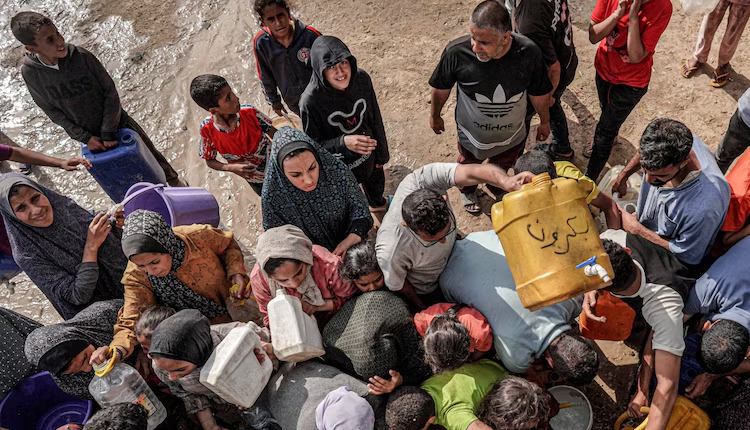New Delhi: As the brutal conflict in Gaza marks its 688th day, the once-vibrant Palestinian enclave lies in tatters, buried under mountains of debris from relentless Israeli airstrikes, ground invasions, and naval bombardments.
What began as a response to Hamas’ October 7, 2023, attack has spiralled into a humanitarian catastrophe, with over 63,000 Palestinians killed — equating to a staggering four deaths every hour over nearly two years. Amid accusations of genocide from global watchdogs, the United Nations has declared a full-blown famine, where hunger stalks the streets alongside fear and destruction.
The war’s toll is not just in numbers but in shattered lives. Israeli forces, citing the need to dismantle Hamas strongholds, have imposed severe restrictions on aid, leaving millions on the brink of starvation.
According to UN reports, more than 281 people, including 114 children, have succumbed to malnutrition and famine-related causes. Displaced families — nearly 2 million strong — huddle in overcrowded tent camps, grappling with acute shortages of food, clean water, and medicines. “The situation is dire; basic necessities are a luxury here,” echoed voices from international aid groups, painting a grim picture of survival in what was once home to over two million Palestinians.
Leaked Israeli intelligence data reveals a chilling disparity: only 13% of the fatalities — around 8,900 — were Hamas or Palestinian Islamic Jihad fighters, based on estimates that pegged the militants’ strength at 50,000-60,000 at the war’s outset. A whopping 83% were civilians, caught in the crossfire of operations that have razed 80% of Gaza’s infrastructure. Israeli troops now control 75% of the territory, pushing deeper despite global outcry, with Prime Minister Benjamin Netanyahu’s government vowing total occupation to eradicate threats.
The human cost extends beyond ordinary citizens. Journalists, doctors, and aid workers — pillars of hope in chaos — have become targets. Over 274 reporters have been killed while documenting the horrors, alongside 283 humanitarian personnel and 1,580 healthcare workers, including nurses and medics. “These are not collateral damages; they are deliberate strikes on those who heal and inform,” criticised several international organisations, labelling Israel’s actions as a “slaughter” that flouts international law.
Even as the rubble piles higher, glimmers of diplomacy flicker. Two temporary ceasefires have come and gone: the first in November 2023, brokered by Qatar, Egypt, and the US, lasted seven days and saw Hamas release 70 hostages (51 Israelis and 19 others) in exchange for 150 Palestinian prisoners. The second, starting January 19, 2025, held for about 60 days before Israel resumed assaults on April 19. Now, amid mounting pressure from world leaders, mediators are pushing a new 60-day truce proposal. Hamas has signalled acceptance, but Israel remains silent, fuelling fears of prolonged agony.
Inside Israel, the war’s ripples are felt deeply. Thousands have taken to the streets, demanding an immediate ceasefire and the safe return of remaining hostages, whose families warn that continued military escalation endangers their loved ones. “Our government’s stubbornness is playing with lives,” lamented one protester in Tel Aviv, highlighting the domestic backlash against Netanyahu’s hardline stance.
As Gaza teeters on the edge, the international community urges swift action. With famine declared and displacement rampant, the question looms: How much more can this beleaguered strip endure before the world intervenes decisively? For now, the sounds of explosions drown out cries for peace, leaving a population trapped in a cycle of despair.



Comments are closed.